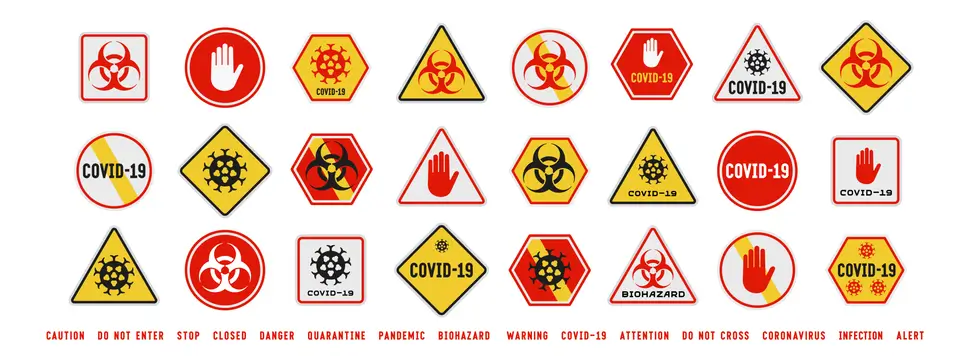Hazard communication is one of the core elements that will constitute workplace safety. This implies allowing workers access to information regarding chemical hazards present in their working environment. It will not only be a compliance but also an active form of managing risk as it would embed a culture of safety.
Organizations would be protecting their workforce through the communication of risks and proper precautionary measures for handling them while still keeping up with the regulatory aspect.
This article gives an investigation of why hazard communication is important, the elements of a good HazCom program, legal compliance, and the role of employers and employees in ensuring a safe working environment.
Why Hazard Communication is Crucial for Workplace Safety
Workers in manufacturing, healthcare, and other industries are constantly exposed to hazardous chemicals. The absence of knowledge about these chemicals subjects them to exposure, which can be a source of chemical burns or inhalation injuries and even long-term health-related issues.
Effective hazard communication ensures that employees are informed about:
- The nature and risks of the substances they handle.
- Proper storage and disposal methods to prevent spills or reactions.
- Emergency response protocols in case of exposure.
When workers are informed, they are in a position to adopt the necessary precautions, reducing the possibility of incidents that may lead to injuries, illnesses, or even fatalities.
Key Components of a Successful HazCom Program
An effective hazard communication program incorporates three basic components: chemical labels, safety data sheets (SDS), and employee training.
Chemical Labels
Chemical containers are expected to have labels that are easy to understand and simple, including:
- Product identifiers, including chemical names.
- Classifications of hazards, like being flammable, and toxic.
- Pictograms represent hazards graphically.
- Precautions SDS shall have precautionary statements that outline how to safely handle the chemical.
Labels are the first line of defense and provide immediate hazard awareness to anyone who may be working with or exposed to the chemical.
Safety Data Sheets (SDS)
Specific Hazardous Substances have SDS, which are detailed documents set in standardized sections providing extensive information related to the properties of a chemical, hazards pertaining to it, safe handling practices, and first aid measures.
All chemicals at the workplace have SDS that should be available and current to include new data about safety.
Employee Training
Employee training equips the employees with information on reading the labels and SDS, protecting themselves when handling chemicals, and reacting appropriately in case of emergency.
Repeated training sessions refresh the employees' memory about aspects they are supposed to know and keep them updated on the availability of new hazards that come to the workplace and changes in procedures.
Legal Requirements and Regulatory Standards
There are several legal requirements regulating HazCom to ensure workers' safety and a homogenous approach towards this safety measure.
OSHA HazCom Standard
OSHA introduced the HCS for having uniform communication concerning the chemicals that have hazards. Employers should:
- Maintain inventory of hazardous chemicals.
- Label containers and distribute SDS.
- Give job training.
GHS (Globally Harmonized System)
The GHS is a globally harmonized system for the classification and labeling of chemicals intended to harmonize hazard communication globally. In this regard, OSHA's alignment with GHS ensures chemical labeling and SDS formats are consistent, thereby making it easier to interpret information across the boundaries.
Role of Employers in Hazard Communication
Hazard communications depend on employers to ensure the success of the programs.
Identifying and Communicating Hazards
Hazardous chemicals should be identified through proper evaluation by employers. Once identified, such hazards should be communicated appropriately by labeling, SDS availability, and well-formatted training.
Maintaining Safety and Compliance
Regular audits of HazCom practices help in filling in gaps and ensuring legal standards compliance. It includes verification of accurate labels and SDS and periodic training. All workers should have access to safety information.
How Effective Hazard Communication Prevents Accidents
Lack of information or wrong information relating to the chemical hazard most of the time causes accidents. Through a good HazCom program:
- Misuse of chemicals may lead to spills, fires, or even an explosion due to incompetence.
- Using poisonous substances can trigger acute or chronic health effects.
- Inability to respond in case of an accident, which increases the severity of the injury.
Organizations by making sure the employees are informed and educated, avoid having a work environment characterized by hazards, which have been mitigated before they will become significant.
Employee Rights and Responsibilities
Even though employers have the main responsibility of performing hazard communication, employees also play an active role in maintaining workplace safety.
- Rights: Employees have the right to know about chemicals they work with, including labels and SDS. They can ask for additional training whenever they believe they are fully equipped to deal with the specific hazards.
- Responsibilities: Workers must follow the usual methods of preventing accidents identified by safety procedures. It must wear personal protective equipment like respirators and gloves while working. They must report their supervisors in cases where conditions or practices look unsafe.
The combined effort of the employer and the employee may achieve the positive outcome of HazCom programs safeguarding everyone at the workplace.
Conclusion
Hazard communication is more than a requirement by regulatory bodies; it is a critical component of workplace safety. Communicating potential hazards may prevent accidents, protect people, and show compliance with standards.
Employers must give importance to strong HazCom programs with strong labelling and clear safety data sheets, as well as consistent training of employees. Meanwhile, employees will not slack; they shall continue to maintain their vigilance in understanding and strictly adhering to the safety procedures.
A culture of open communication and shared responsibility within a workplace minimizes many risks and leads to a safety culture where safety is, in effect the standard rather than being an objective. Effective hazard communication ensures businesses protect their most valuable asset-their people and keep them safe and productive.


